ZkSync Era Network: The L2 Bringing Verifiability to Ethereum
Zksync era represents one of the most popular Layer 2 scaling solutions for the Ethereum network. In this blog post, we will be breaking down its significance and more.
Introduction
https://www.storj.io/blog/supporting-the-launch-of-zksync-2-0-and-eip-4844
ZkSync is a layer 2 scaling solution for Ethereum leveraging zero-knowledge proofs for the purpose of enhancing the efficiency and the cost-effectiveness of Ethereum transactions which are known to be very costly due to the network's high gas fees. ZkSync Era is one of the early adopters of ZK-rollups, a revolutionary technology that rolls computation and the storage state of transactions off-chain and it aims to reduce the high transaction fees and slow network processing speeds of the Ethereum blockchain.
It enables batch-processing of transactions by bundling transactions together and executing them in a single batch. This process involves posting a minimal summary of the transactions to the Ethereum mainnet, which then serves as cryptographic proof that the transactions are valid.
zkSync Era is EVM-compatible, meaning it can execute Ethereum Virtual Machine (EVM) bytecode, but it requires some adjustments to the code for deployment. This compatibility allows for a wide range of applications to be built on zkSync, including decentralized finance (DeFi) and other blockchain-based services. Despite its current transparency, zkSync has plans to implement privacy features to further encourage adoption.
The project has attracted significant attention and funding, with Matter Labs, the creator of zkSync, raising over $400 million across multiple funding rounds. zkSync Era has already seen a vibrant ecosystem of applications, with over 200 projects waiting to deploy on its platform. The launch of zkSync Era marks a significant step forward in Ethereum's scalability, offering a more efficient and cost-effective solution for decentralized applications and services.
Components of ZkSync: How Do They Help Scale Ethereum?
In the quest to enhance Ethereum's scalability and address its challenges with high transaction fees and slow speeds, innovative solutions like ZK Rollups, zkSync Era, and zkPorter have emerged. These technologies leverage the power of zero-knowledge proofs and Ethereum's Layer 2 framework to provide a more efficient, secure, and cost-effective way to process transactions. By moving computation and state storage off-chain, these solutions significantly reduce the load on the Ethereum Mainnet, leading to faster and cheaper transactions. This article will delve into the mechanisms and implications of ZK Rollups, the evolution of zkSync from Lite to Era, and the introduction of zkPorter as an off-chain data availability solution, highlighting how each contributes to Ethereum's scalability and the broader blockchain ecosystem.
ZK Rollups

ZK Rollups are a Layer 2 scaling solution that significantly enhances Ethereum's scalability by moving the computational workload off-chain. By bundling multiple transactions into a single batch and posting a minimal summary of these transactions to the Ethereum Mainnet, ZK Rollups reduce the load on the network, leading to faster and cheaper transactions. This approach leverages zero-knowledge proofs, a cryptographic method that allows for the verification of transactions without revealing their details, ensuring both privacy and efficiency. The Ethereum network provides security and data availability, ensuring that the state updates are valid and immutable. This innovative technology is crucial for addressing Ethereum's challenges with high transaction fees and slow speeds, making it a game-changer in the blockchain technology landscape.
ZkSync Era

zkSync Era represents a significant advancement in zkSync's evolution, introducing EVM compatibility. This compatibility allows developers to build and migrate their EVM-compatible decentralized applications (dApps) to zkSync Era, thereby enjoying lower fees and costs while maintaining the security and decentralized nature of Ethereum. The introduction of EVM compatibility marks a milestone in zkSync's mission to achieve mass adoption, offering a blend of security, speed, and cost-effectiveness that is poised to reshape the Ethereum landscape. This evolution from zkSync Lite to zkSync Era is a testament to the project's commitment to addressing Ethereum's scalability issues and enhancing the platform's utility and adoption.
ZkPorter
https://miro.medium.com/v2/resize:fit:720/format:webp/0*xMpD4XvB3ngwCtN_
ZkPorter is an innovative off-chain data availability solution designed for the purpose of further enhancing ZkSync's capability. It operates under a proof-of-stake model utilizing a network of 'Guardians' who stake ZkSync Tokens to sign blocks and for the purpose of confirming data availability. This system ensures that the transactions are verified in a secure manner and available without overloading the Ethereum mainnet, thereby enabling seamless interactions between the accounts and smart contracts. The use of guardians who cannot access users' funds ensures security while maintaining the integrity of the system.
ZkPorter's approach to scalability and security through off-chain data availability is a critical component in addressing Ethereum's scalability challenges, offering a robust solution for decentralized applications and services.
The Steps taken for a ZkSyncEra Transaction From Start to Finish

The architecture of zkSync Era is built around a diamond architecture, which segregates functionality from storage through the use of Facets. This design enhances the system's upgradability and scalability, ensuring that each component can be updated or replaced independently without affecting the overall system. The transaction process in zkSync Era involves generating transactions off-chain, using ZKP for verification, and executing these transactions on the EraVM, a zkEVM. This process ensures that transactions are securely and efficiently processed, leveraging the scalability and security benefits of zero-knowledge proofs.
Diamond Architecture of zkSync Era
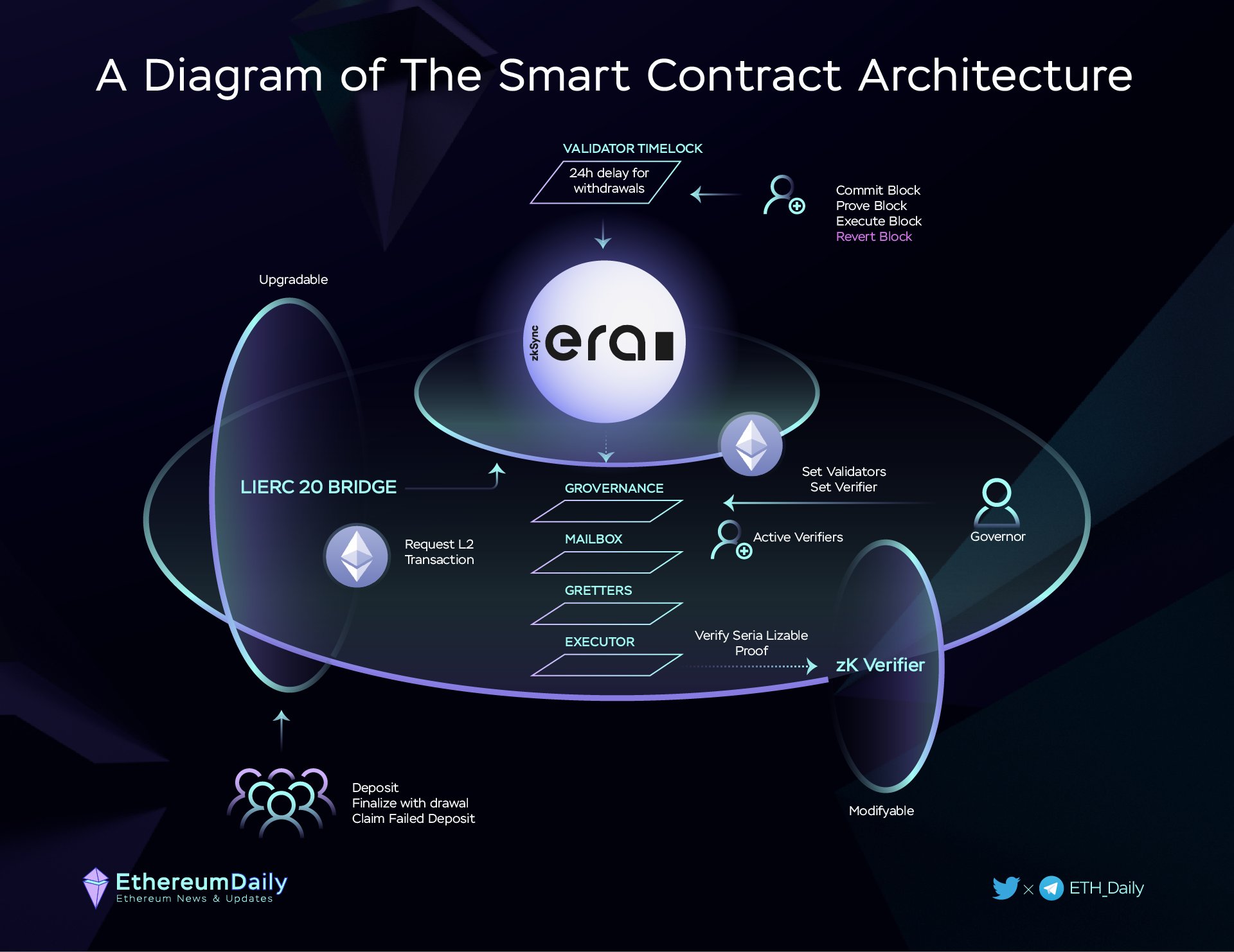 https://twitter.com/ETH_Daily/status/1643226802565922816
https://twitter.com/ETH_Daily/status/1643226802565922816
The diamond architecture of zkSync Era is designed to segregate functionality from storage, utilizing a set of smart contracts known as Facets. This architecture is characterized by its granular upgradability and limitless functionality, making it highly adaptable and secure. The core components of this architecture include:
- Admin (DiamondCut): Manages the addition and removal of Facets. It has 8 registered selectors.
- Admin (Governance): Handles governance-related tasks, with 5 registered selectors.
- Executor: Responsible for executing transactions, with 4 registered selectors.
- Getters: Provides access to the state of the contract, with 35 registered selectors.
- Mailbox: Facilitates communication between Facets, with 6 registered selectors.
The architecture employs an AppStorage structure for the application's state and a DiamondStorage structure for diamond-related functionality that is distributed among 4 facets with storage contained in only 2 structures. This design allows for a modular and scalable system where each Facet can be updated or replaced without affecting the others, ensuring the system's robustness and flexibility.
Transaction Process in zkSync Era
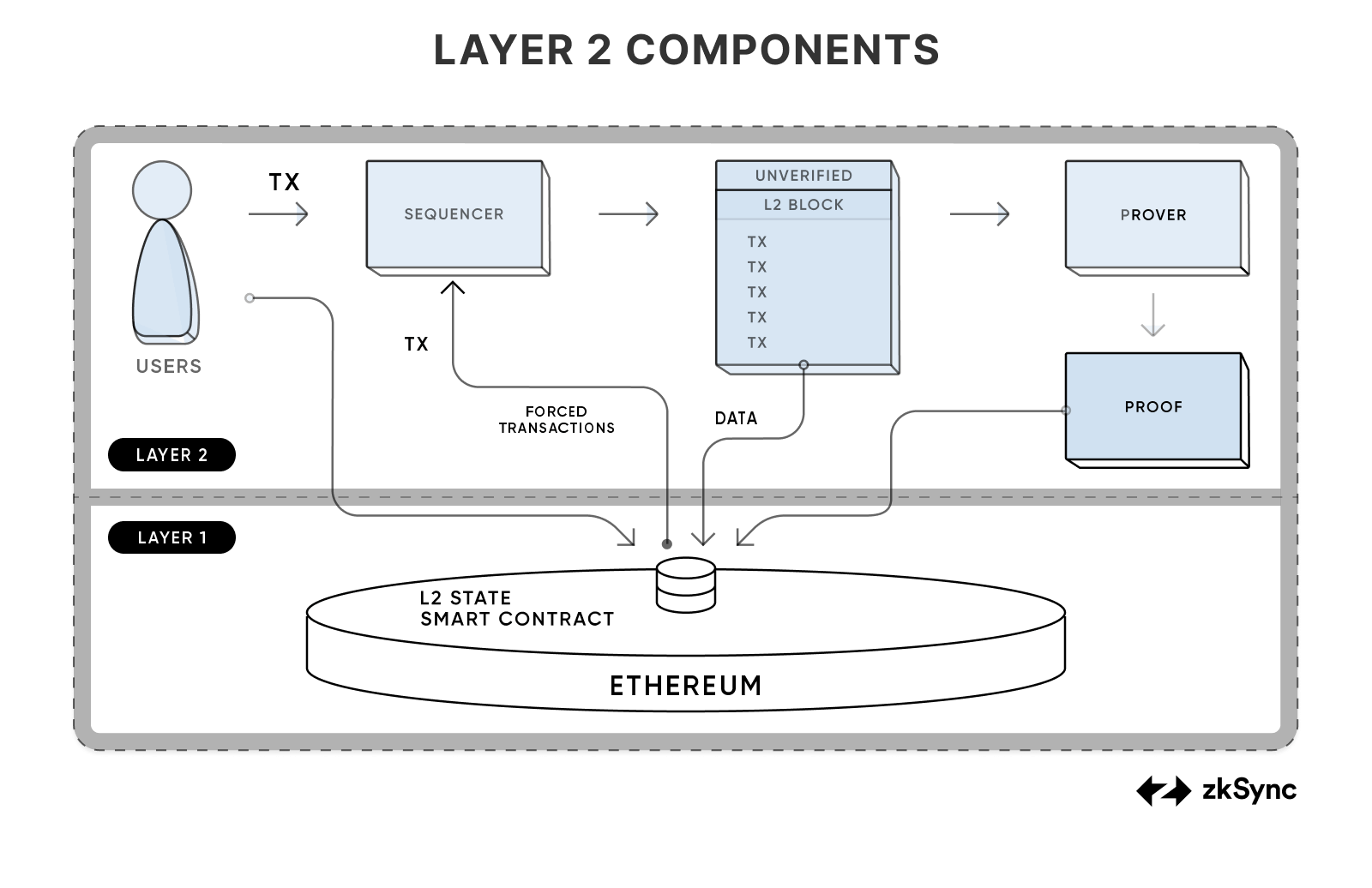 https://docs.zksync.io/zk-stack/concepts/transaction-lifecycle.html#overview
https://docs.zksync.io/zk-stack/concepts/transaction-lifecycle.html#overview
The transaction process in zkSync Era, a Zk Rollup Layer 2 blockchain, involves several steps from generation to finalization, leveraging zero-knowledge proofs (ZKP) for verification. Here's an overview of the workflow:
- Transaction Generation: Users initiate transactions on the zkSync platform. These transactions are processed off-chain to reduce congestion and gas fees on the Ethereum mainnet.
- Zero-Knowledge Proofs (ZKP): zkSync uses its own ZKP system, part of the Boojum upgrade, to succinctly prove the execution of Layer 2 transactions. This system allows for the verification of thousands of transactions in a compact manner, ensuring security and efficiency.
- EraVM Execution: The EraVM, a zkEVM, executes the Layer 1 batches. It produces a ZK witness for each batch, which is crucial for proving the correct computation of the L1 batch.
- L1 Smart Contract Verification: Once an L1 batch is committed to zkSync's L1 smart contract, the witness is provided to this smart contract to prove the correct computation of the L1 batch. The L1 smart contract then delegates verification to a specialized smart contract acting as the verifier in the ZKP system.
- Finalization: After successful verification, the transaction is finalized on the zkSync platform. This process ensures that transactions are securely and efficiently processed, leveraging the scalability and security benefits of zero-knowledge proofs
This transaction process, combined with the diamond architecture, allows zkSync Era to offer a scalable, secure, and efficient solution for executing transactions on the Ethereum blockchain, significantly reducing gas fees and transaction times while maintaining high-security standards.
Working of the Proving System of ZkSync
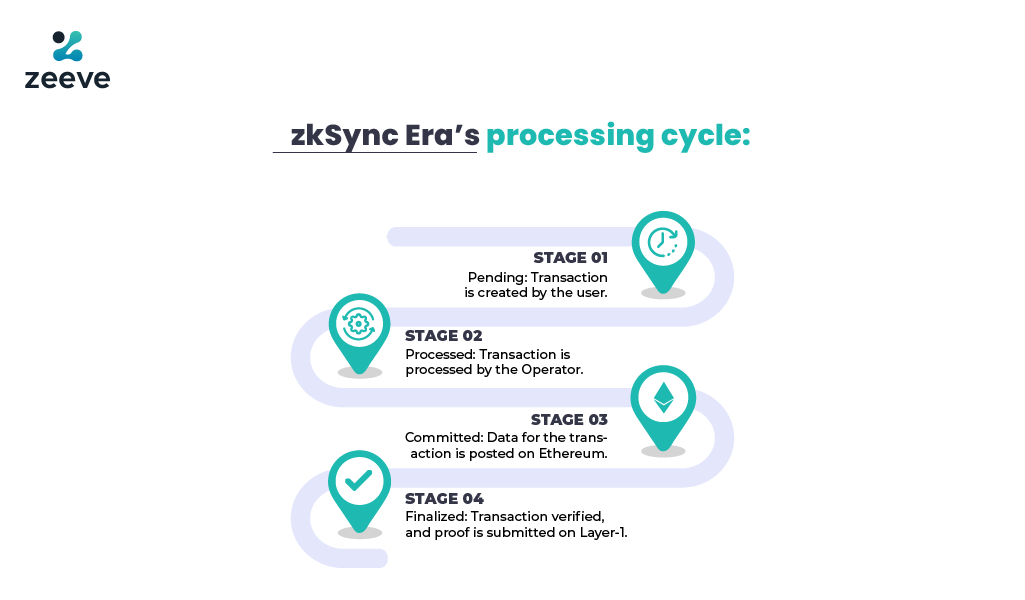 https://www.zeeve.io/blog/zksync-era-guide-everything-you-need-to-know/
https://www.zeeve.io/blog/zksync-era-guide-everything-you-need-to-know/
ZkSync Era utilizes Zero-knowledge proofs to efficiently prove the execution of a transaction on it. This system is vital for the purpose of maintaining security and scalability within the ZkSync platform. The Boojum upgrade introduced a new Zk Proofs system functioning like a toolbox for the purpose of implementing ZK circuits. These circuits are designed for the purpose of performing arbitrary computations essential for generating computational witnesses which can then be verified in a non-interactive fashion proving that the ZK circuits were implemented successfully.
The EraVM, a zkEVM, plays a pivotal role in this process by producing a ZK witness each time a Layer 1 (L1) batch is processed. This witness allows the operator to prove the correct computation of the L1 batch. Once an L1 batch is committed to zkSync's L1 smart contract, the witness can be provided to this smart contract to prove that EraVM computed the L1 batch correctly. The L1 smart contract then delegates verification to a specialized smart contract acting as the verifier in the ZKP system.
ZK Circuits
https://www.halborn.com/blog/post/what-are-zk-snarks
Let's take a step back and understand what ZK Circuits are. Zero-knowledge circuits essentially refer to the process of one party aka the prover node convincing the other party aka the verifier node that they possess certain information without revealing the actual information.
ZK Circuits are essentially mathematical equations allowing you to prove that the prover knows something about the verifier without revealing any information about what is being proved. Now, this is not to be confused with ZK proofs which are more of a cryptographic protocol this is specifically a technique used to encode computer programs in the form of a ZK proof and it defines the logic and rules to verify that a program was run without any tampering and in a correct manner.
Significance of ZK Circuits
https://jtriley.substack.com/p/constructing-zk-snark-circuits
- Privacy: One of the most main use cases of ZK Circuits is enabling privacy on the blockchain and traditional blockchains like Ethereum and Bitcoin are inherently transparent and reveal all details about transactions easily traceable through Block explorer tools like EtherScan and more. A blockchain transaction in general is publicly viewable however tools like ZK Circuits help us achieve confidentiality in transactions where the sender, receiver, and the transaction amount sent can all be hidden while still undergoing verification and making sure it is a legitimate transaction.
- Scalability: Blockchain scalability has been a big challenge for the majority of the industry and transaction speeds are at an all-time low on the Ethereum blockchain for example with ZK Circuits, multiple transactions can be bundled together into a single proof that can be verified together in the form of a batch on-chain.
- Security: ZK Circuits prove to be powerful for the enhancement of blockchain security proving the legitimacy and validity of a transaction and also performing computations off-chain, reducing the net load on the main network thus making it less prone to attacks. They can also be used to verify the accuracy of the smart contracts executed.
Security Implications of ZK Circuits
https://blog.oxor.io/common-vulnerabilities-in-zk-proof-5ba7620dfa2f?gi=24932b38e3f6
ZK Circuits definitely have their own set of demerits and are not perfect.
ZK Circuits are fully dependent and reliant on the completeness and soundness of a transaction and any discrepancy caused could potentially undermine the security because this could lead to incorrect verification.
They also are filled with bugs like unconstrained signals, computation discrepancies, unsafe component usage, logical errors, and trusted security leaks which can prove to be very serious and can lead to potential damages and causes which can however be solved through security audits.
In summary, ZK circuits are a powerful tool in the blockchain and cryptocurrency industries, offering enhanced security and efficiency through off-chain verification of complex computations. Despite their complexity and challenges, ongoing innovation and development in this area continue to expand the potential applications and improvements of ZK circuits.
Upgrades of Zk Sync Era and Their Significance

The upgrades of the zkSync Era, particularly the transition to a new STARK-based proof system called 'Boojum', mark significant advancements in the scalability and efficiency of the zkSync platform. This cryptographic upgrade is part of a broader effort to enhance the security, scalability, and developer experience of zkSync Era, a Zero Knowledge (ZK) rollup that supports generalized EVM compatibility for the Ethereum blockchain.
The significance of these upgrades can be understood in several key areas:
- Scalability and Efficiency: The introduction of 'Boojum' as a new STARK-based proof system is a significant step towards improving the scalability of zkSync Era. STARKs (Scalable Transparent ARguments of Knowledge) are known for their ability to handle a large number of transactions with minimal proof size, making them highly efficient for scaling blockchain networks. This upgrade aims to reduce the gas fees and increase the transactions per second that zkSync Era can handle, thereby making it more attractive for developers and users.
- Security and Decentralization: zkSync Era inherits the full security benefits of Ethereum, ensuring that all ecosystem projects built on it are protected by the robust security model of Ethereum. This is crucial for maintaining the integrity and trustworthiness of the platform. The upgrade to 'Boojum' and other advancements in the zkSync Era are designed to maintain or even enhance these security guarantees, making it a secure choice for developers and users alike.
- Future-Proofing and Innovation: The zkSync Era platform is designed to be future-proof, with the ability to incorporate future improvements without requiring code changes from ecosystem projects. This includes advancements in prover technology, such as hardware acceleration, and new proof systems like 'Boojum'. Additionally, the integration of LLVM-enabled modern programming languages and other innovations like Hyperchains, Hyperbridges, and ZK Stack further enhance the platform's capabilities and potential for growth.
- EVM Compatibility and Developer Experience: zkSync Era's compatibility with the Ethereum Virtual Machine (EVM) allows developers to easily port their dApps to the platform. This compatibility, combined with the platform's commitment to decentralization and open-source principles, makes it an attractive option for developers looking to leverage the benefits of ZK rollups without the complexity of integrating new technologies.
In summary, the upgrades of zkSync Era, including the transition to the 'Boojum' STARK-based proof system, are significant because they enhance the platform's scalability, efficiency, security, and developer experience. These improvements not only make zkSync Era a more attractive option for developers and users but also position it as a leading solution for scaling the Ethereum blockchain in a secure and decentralized manner.
ZK Sync Proving System Explained

The zkSync proving system is a critical component of the zkSync platform, enabling it to operate as a ZK rollup by leveraging Zero-Knowledge Proofs (ZKP) to succinctly prove the execution of Layer 2 (L2) transactions. This system is designed to enhance scalability and efficiency while maintaining the security and decentralization of the Ethereum blockchain. Here's a detailed rundown of the zkSync proving system and its components:
Components of the zkSync Proving System
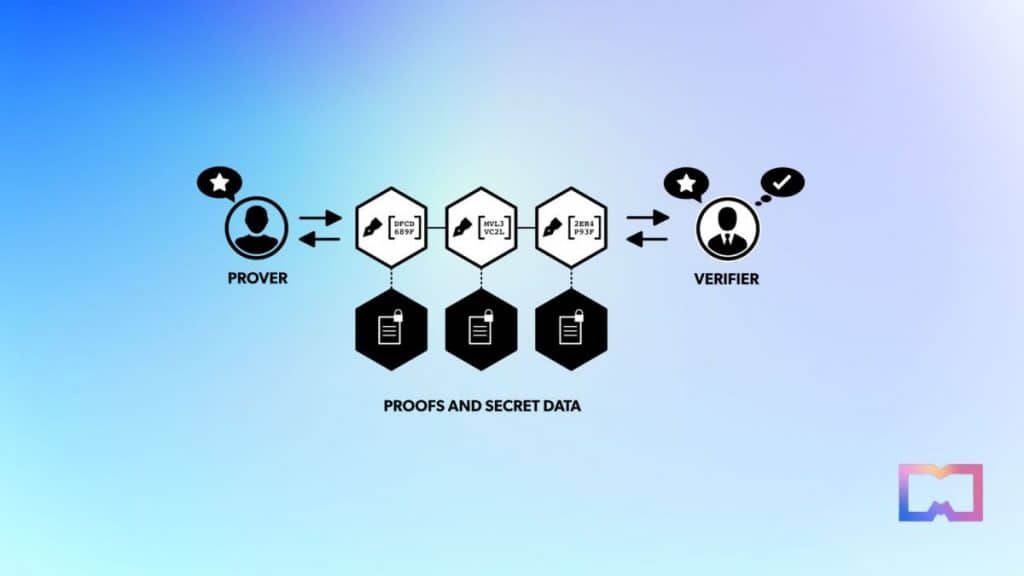 https://mpost.io/a-beginners-guide-to-the-zksync-ecosystem/
https://mpost.io/a-beginners-guide-to-the-zksync-ecosystem/
- Witness Generation: This is the process where a user (prover) generates proof of transaction validity. When a user initiates a transaction, a corresponding witness is created, which serves as proof that the transaction is valid and adheres to the network's consensus rules. This process ensures that the witness reveals no information about the transaction's specifics, maintaining user privacy and data security. Transactions are proved in batches, which are then processed and sent to the circuits.
- Circuits: The virtual machine of zkSync needs to prove that the execution was completed correctly to generate proofs correctly. This is accomplished using circuits, which transform normal code logic into a format readable by the proof system. The virtual machine reads the code that will be executed and sorts the parts into various circuits. These circuits then break down the parts of the code, which can then be sent to the proof system.
- Proof System (Boojum): The proof system is essential for processing the ZK circuit. Boojum is the proving system used by zkSync, which can be thought of as a toolbox holding essential tools and parts like the prover (which helps confirm the circuit's functionality), verifier (which double-checks everything), and various other backend components. These components are the technical bits and pieces, like defining Booleans, Nums, and Variables that will be used in the circuits.
- zkevm_circuits: This is where the actual circuits are built and stored. The circuits are built from Boojum and designed to replicate the behavior of the Ethereum Virtual Machine (EVM). These circuits are essential for proof systems such as Boojum to generate computation witnesses, which can then be verified non-interactively, proving that the ZK circuits were executed correctly.
- zkevm_test_harness: This acts as a testing ground for the circuits. It contains different tests to ensure the circuits work correctly and has the necessary code that helps kickstart and run these circuits smoothly.
Significance of the zkSync Proving System
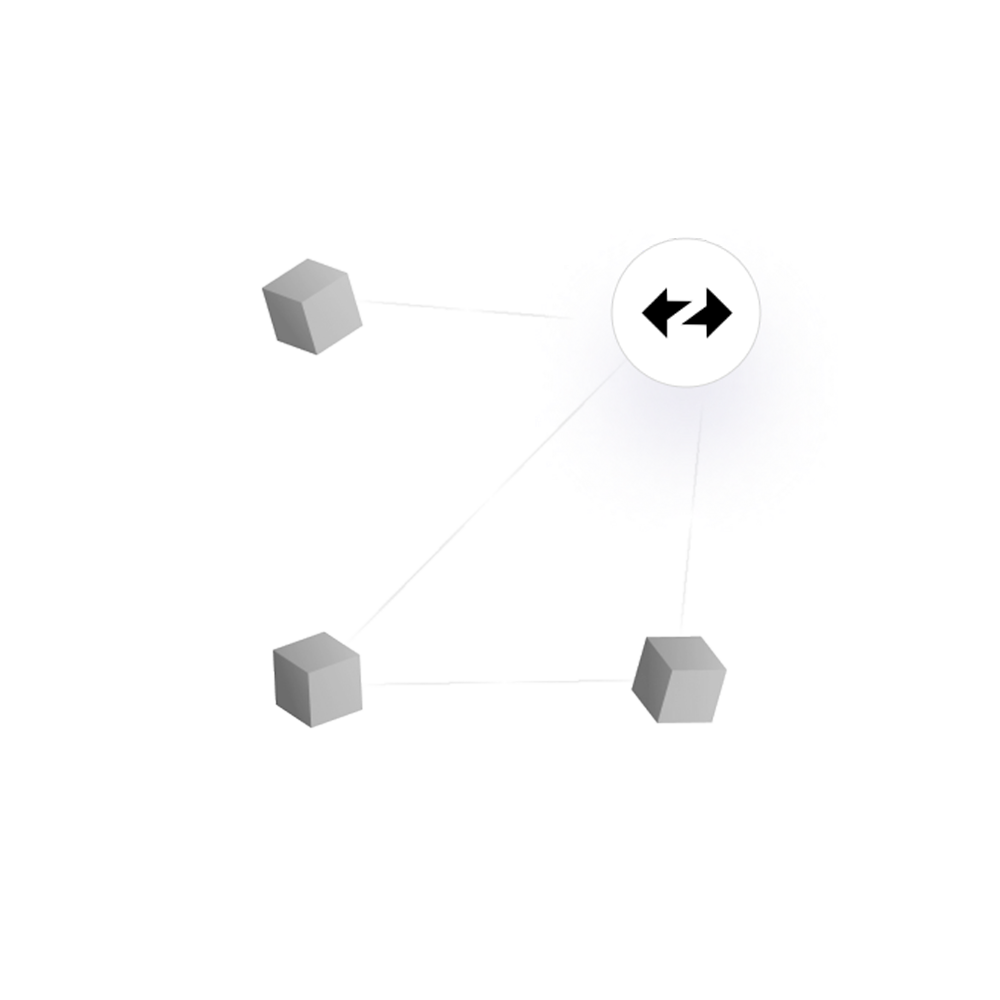 https://www.zeeve.io/blockchain-protocols/deploy-zksync-era-node/
https://www.zeeve.io/blockchain-protocols/deploy-zksync-era-node/
- Scalability and Efficiency: The zkSync proving system, particularly with the Boojum upgrade, enables the platform to handle a large number of transactions with minimal proof size, significantly reducing fees for users while inheriting the same security as Ethereum.
- Security and Decentralization: By leveraging Zero-Knowledge Proofs, zkSync ensures that all transactions are verified without revealing sensitive information, maintaining the security and decentralization of the platform. This approach allows for the execution of L2 transactions to be proven correct, bringing "Ethereum's security" to its L2.
- Improved Scalability: The use of ZKP in zkSync allows for the batching of many transactions together and only submitting a single proof, significantly improving scalability. Verifiers do not need to compute the whole set of transactions to verify they were correctly executed, focusing solely on the transactions' effects.
In conclusion, the zkSync proving system, with its components and the Boojum upgrade, plays a crucial role in enhancing the scalability, efficiency, and security of the zkSync platform. It allows for the succinct proof of the execution of L2 transactions, bringing Ethereum's security model to Layer 2 while addressing scalability issues through batching and ZKP.
How Does ZkSync Leverage Smart Contracts Architectures?
 https://twitter.com/l2beat/status/1498309238275424263
https://twitter.com/l2beat/status/1498309238275424263
zkSync, a leading Layer 2 scaling solution for Ethereum, leverages advanced smart contract architectures to enhance scalability and efficiency. At the heart of zkSync's infrastructure is its L1 smart contract, which serves as a critical connector between Ethereum's Layer 1 and zkSync's Layer 2. This smart contract is not just a simple bridge; it is a sophisticated system designed to handle complex operations such as validating proofs, managing Layer 2 to Layer 1 communication, and finalizing state transitions. One of the innovative components of this L1 smart contract is its implementation as a Diamond Proxy, a pattern inspired by EIP-2535 and the mudgen reference implementation.
The Role of the Diamond Proxy in zkSync
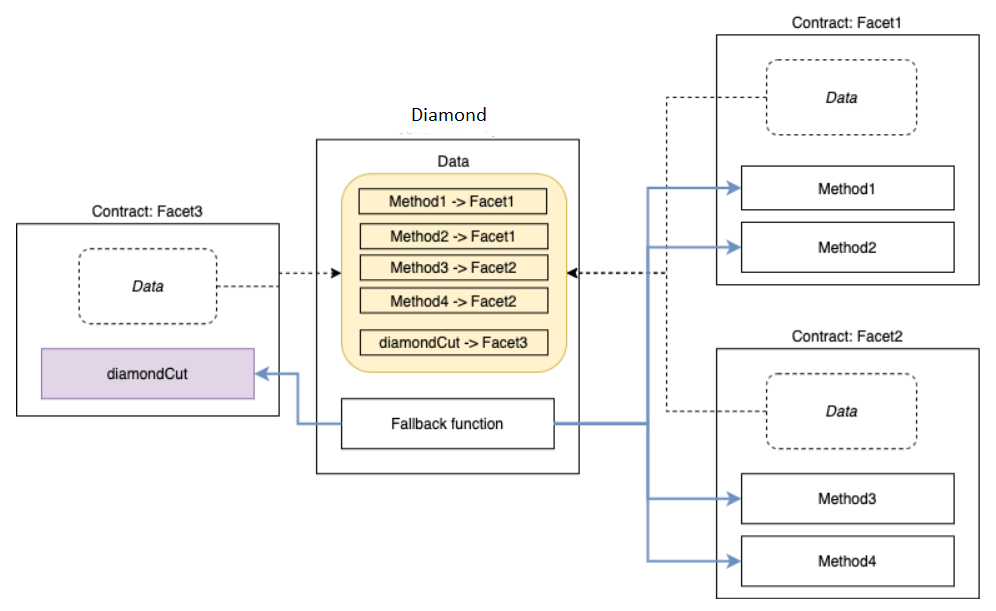 https://medium.com/coinmonks/proxy-diamonds-c9900264bb2f
https://medium.com/coinmonks/proxy-diamonds-c9900264bb2f
The Diamond Proxy pattern is a cornerstone of zkSync's smart contract architecture, offering a flexible and extendable framework for managing smart contract functionality. This pattern allows zkSync to overcome the inherent limitations of Ethereum smart contracts, such as the 24 KiB bytecode size restriction, by enabling incremental smart contract updates and facilitating the segregation of functionality from storage.
This segregation is achieved through the use of facets, which are separate smart contracts that contain specific functionalities. The Diamond Proxy acts as a central hub, delegating calls to the appropriate facet based on the function selector, thereby enabling a modular and scalable smart contract system.
Key Features of zkSync's Diamond Proxy
 https://www.certik.com/resources/blog/7laIe0oZGK6IoYDwn0g2Jp-diamond-proxy-contracts-best-practices
https://www.certik.com/resources/blog/7laIe0oZGK6IoYDwn0g2Jp-diamond-proxy-contracts-best-practices
- Granular Upgradability: The Diamond Proxy pattern supports incremental smart contract updates, allowing zkSync to evolve and adapt to changing requirements without the need for complete contract replacement.
- Bytecode Size Limitation Overcome: By distributing functionality across multiple facets, zkSync circumvents the Ethereum smart contract bytecode size limitation, enabling the deployment of more complex and larger smart contracts.
- Freezability: zkSync's implementation introduces the concept of freezability for facets, providing an additional layer of security and control. Privileged actors can freeze the entire diamond, making all facets with the isFreezable marker inaccessible until unfrozen by the governor or admin.
- Efficient Storage Management: zkSync's Diamond Proxy employs a dual storage structure, DiamondStorage, and AppStorage, to ensure efficient introspection, updates, and freezing capabilities while maintaining internal data consistency and accurate bookkeeping.
Importance of Diamond Proxy Pattern
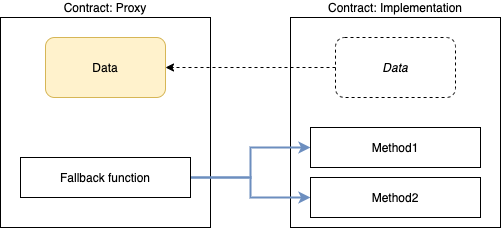 https://hiddentao.com/archives/2020/05/28/upgradeable-smart-contracts-using-diamond-standard
https://hiddentao.com/archives/2020/05/28/upgradeable-smart-contracts-using-diamond-standard
The Diamond Proxy pattern is a critical component in the development of scalable and upgradeable smart contracts, particularly in the context of Ethereum's limitations. Its importance and benefits are multifaceted, addressing several key challenges in smart contract development and deployment.
- Overcoming Bytecode Size Limitations: The Ethereum network imposes a strict bytecode size limit of 24KB per contract. This constraint severely limits the complexity and functionality that can be packed into a single smart contract. The Diamond Proxy pattern circumvents this limitation by allowing the distribution of functionality across multiple facets, enabling the development of more complex and feature-rich smart contracts without hitting the size barrier.
- Incremental Upgrades: Traditional smart contracts require a complete redeployment for any upgrade, which is both costly and risky. The Diamond Proxy pattern supports partial upgrades, allowing individual functions or facets to be modified without affecting the entire contract. This flexibility is crucial for maintaining and evolving smart contracts over time, ensuring that they can adapt to changing requirements and fix bugs without disrupting the contract's operation.
- Modular Permissions: Unlike other proxy patterns that grant broad access control, the Diamond Proxy pattern supports modular permissions. This means that specific permissions can be assigned to upgrade or modify only certain facets of the contract, providing a more granular and secure approach to contract management. This feature enhances the security posture of smart contracts by limiting the potential for unauthorized changes.
- Enhanced Security and Flexibility: The Diamond Proxy pattern introduces a level of security and flexibility that is not available with traditional smart contract architectures. Separating functionality into facets and using a central proxy to route calls, it reduces the risk of storage and function collisions, which are common security concerns in smart contract design. Additionally, the pattern allows for the centralization of upgrade authority, which can be mitigated by using multi-signature accounts to perform admin actions, thereby reducing the risk of centralization vulnerabilities.
How the Diamond Proxy Pattern Helps
 https://safe.mirror.xyz/P83_rVQuUQJAM-SnMpWvsHlN8oLnCeSncD1txyMDqpE
https://safe.mirror.xyz/P83_rVQuUQJAM-SnMpWvsHlN8oLnCeSncD1txyMDqpE
- Scalability and Complexity: By enabling the development of large, complex smart contracts that exceed the Ethereum bytecode size limit, the Diamond Proxy pattern significantly enhances the scalability of Ethereum-based applications. This is particularly important for projects that require advanced functionality and flexibility.
- Security and Maintenance: The pattern's support for incremental upgrades and modular permissions helps in maintaining the security and integrity of smart contracts over time. It allows for the correction of bugs and the addition of new features without compromising the contract's security or stability.
- Developer and User Experience: The Diamond Proxy pattern improves the developer experience by providing a structured and flexible framework for smart contract development. It also enhances the user experience by ensuring that smart contracts remain accessible and functional, even as they evolve and adapt to new requirements.
zkSync's L1 smart contract as a Diamond Proxy is a testament to the innovative approaches taken to address the challenges of Ethereum's scalability and functionality limitations. By leveraging the Diamond Proxy pattern, zkSync has created a robust and flexible system that not only enhances the scalability of the platform but also sets a new standard for smart contract architecture in the Ethereum ecosystem.
Understanding Diamond and App Storage: Critical Components for Storage on Smart Contracts
https://bitsbyblocks.com/eip-2535-diamond-standard-explained-part-3-understanding-storage-patterns-in-diamonds/
Introduction to Diamond and App Storage in zkSync
In the context of zkSync, a leading Layer 2 scaling solution for Ethereum, the concepts of Diamond and App Storage are pivotal in the architecture of smart contracts. These components are integral to the design and functionality of zkSync's smart contracts, enabling scalability, security, and efficiency in the execution of complex transactions and agreements. This section aims to provide a detailed understanding of how Diamond and App Storage fits into the broader ecosystem of zkSync and their specific roles within the smart contract architecture.
Understanding Diamond and App Storage
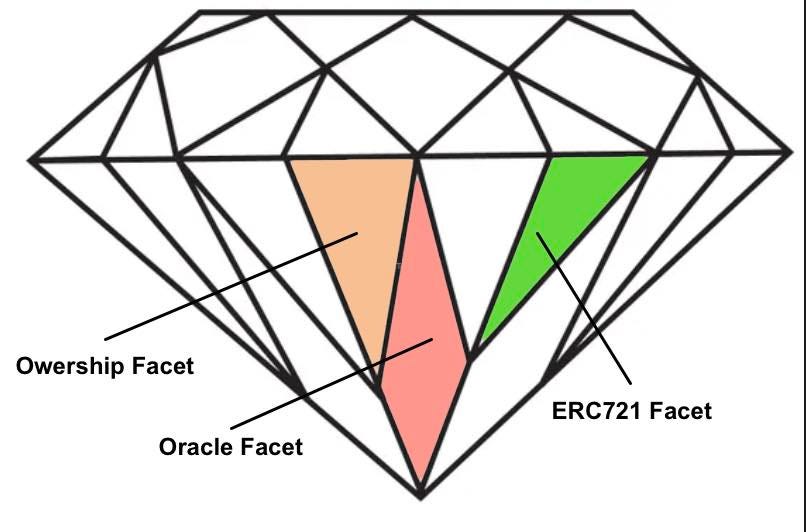 https://eip2535diamonds.substack.com/p/introduction-to-the-diamond-standard
https://eip2535diamonds.substack.com/p/introduction-to-the-diamond-standard
Diamond Storage
Diamond Storage is a critical component of zkSync's smart contract architecture, particularly in the implementation of the Diamond Proxy pattern. This pattern allows for the distribution of functionality across multiple facets, thereby overcoming the Ethereum bytecode size limitation and enabling more complex and feature-rich smart contracts. The Diamond Storage is designed to manage the mapping of function selectors to the appropriate facets, ensuring that calls are correctly routed to the right piece of functionality. This mechanism is essential for the modularity and flexibility of zkSync's smart contract system, facilitating incremental smart contract updates and the segregation of functionality from storage.
App Storage
App Storage complements Diamond Storage by providing a structured and efficient way to manage the state of zkSync's smart contracts. While Diamond Storage focuses on routing function calls to the correct facets, App Storage is responsible for storing the actual data and state variables that these functions manipulate. This separation of concerns between routing and storage allows for a more organized and scalable smart contract system, where the logic (Diamond Storage) and the data (App Storage) are managed independently. This design not only enhances the scalability and flexibility of smart contracts but also improves the security and maintainability of the system.
How Diamond and App Storage Fit into zkSync
https://medium.com/@defylogic.eth/missing-zksync-era-diamond-proxy-transactions-and-eth-value-bcccb7afdaa8
The integration of Diamond and App Storage within zkSync's smart contract architecture is a testament to the platform's commitment to innovation and efficiency. By leveraging these components, zkSync is able to offer a scalable, secure, and flexible environment for the development and deployment of smart contracts. This architecture supports the creation of more complex and feature-rich applications, enabling zkSync to cater to a wide range of industries and use cases.
Moreover, the use of Diamond and App Storage in zkSync's smart contracts aligns with the platform's broader goals of enhancing transaction efficiency, reducing gas fees, and improving the overall user experience. By facilitating the development of smart contracts that can operate at scale, zkSync is poised to drive innovation and growth in the blockchain ecosystem.
In conclusion, Diamond and App Storage are integral to the smart contract architecture of zkSync, playing a crucial role in the platform's ability to offer scalable, secure, and efficient solutions for smart contract development and deployment. Their implementation demonstrates zkSync's commitment to leveraging advanced smart contract patterns and technologies to address the challenges of Ethereum's scalability and functionality limitations.
UX and Ecosystem of ZkSync
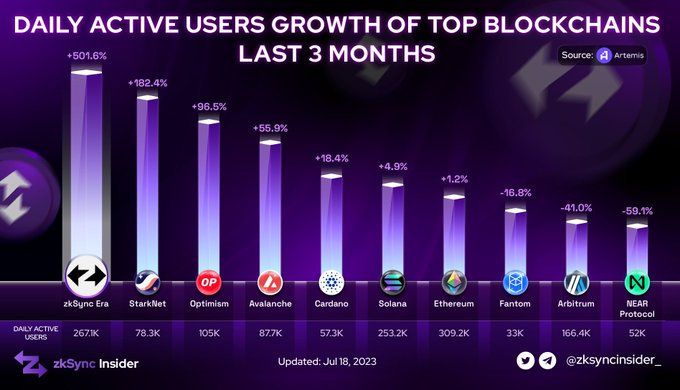
User Experience
zkSync significantly enhances the user experience by offering a range of benefits that address the core challenges of the Ethereum network. These benefits include:
- Faster and Cheaper Transactions: zkSync employs zkRollup technology, which bundles multiple transactions into a single proof, significantly increasing throughput from 14 transactions per second (TPS) to over 2000 TPS. This not only speeds up processing but also reduces transaction costs, making microtransactions economically feasible.
- Enhanced Security: zkSync utilizes Zero-Knowledge Proofs (ZK proofs) to validate transactions without revealing sensitive data, ensuring privacy and security. This method safeguards against potential security threats, providing a secure and trustless environment for transactions.
- Support of the Ethereum Virtual Machine (EVM): zkSync Era, an advanced version of zkSync, is EVM compatible, allowing developers to easily migrate existing Ethereum smart contracts and applications. This compatibility ensures that users can leverage the full capabilities of the Ethereum network while benefiting from zkSync's scalability and cost-efficiency.
Ecosystem and Community
zkSync's ecosystem is rapidly growing, with over 200 projects from major brands and platforms such as Chainlink, Uniswap, SushiSwap, Aave, Argent, Gnosis, and Curve expressing interest in deploying on zkSync. This widespread interest underscores the platform's potential to shape the future of the internet using Ethereum and ZK technology.
The involvement of these projects not only demonstrates the confidence in zkSync's technology but also highlights the platform's commitment to preserving Ethereum's foundational values of freedom, self-sovereignty, and decentralization at scale. zkSync's mission is not just about increasing Ethereum's throughput but about fully preserving its core principles while doing so.
The support from major brands and the active involvement of over 200 projects in the zkSync ecosystem underscores the importance of community ownership. zkSync stands for trustlessness, security, resilience, forkability, and community ownership, emphasizing the importance of these values in its development and governance.
In conclusion, zkSync's focus on user experience and its commitment to the Ethereum ecosystem, as evidenced by the involvement of major projects and brands, position it as a critical player in the blockchain ecosystem.
Conclusion
https://coinmarketcap.com/academy/article/what-is-zksync-the-ultimate-guide-to-the-zksync-ecosystem
In conclusion, zkSync stands as a beacon of innovation in the blockchain space, offering a robust and scalable solution to the challenges of high transaction fees and slow speeds inherent in the Ethereum network. Its core technologies, such as ZK Rollups and the zkSync Proving System, coupled with the introduction of zkSync Era and zkPorter, demonstrate a commitment to enhancing the scalability, security, and user experience of decentralized applications (DApps).






































